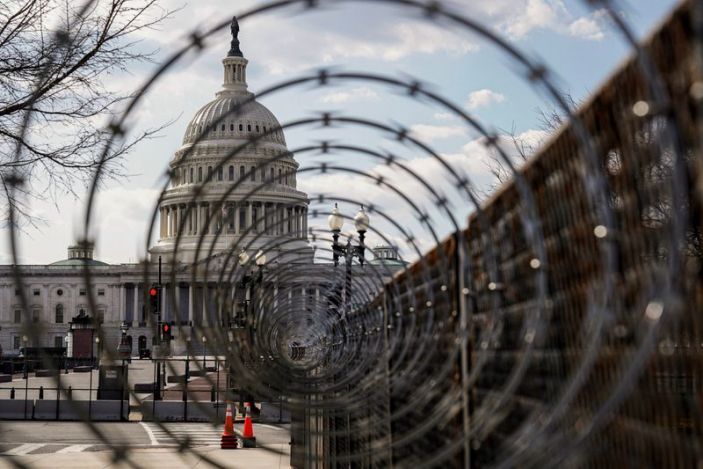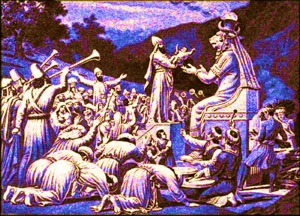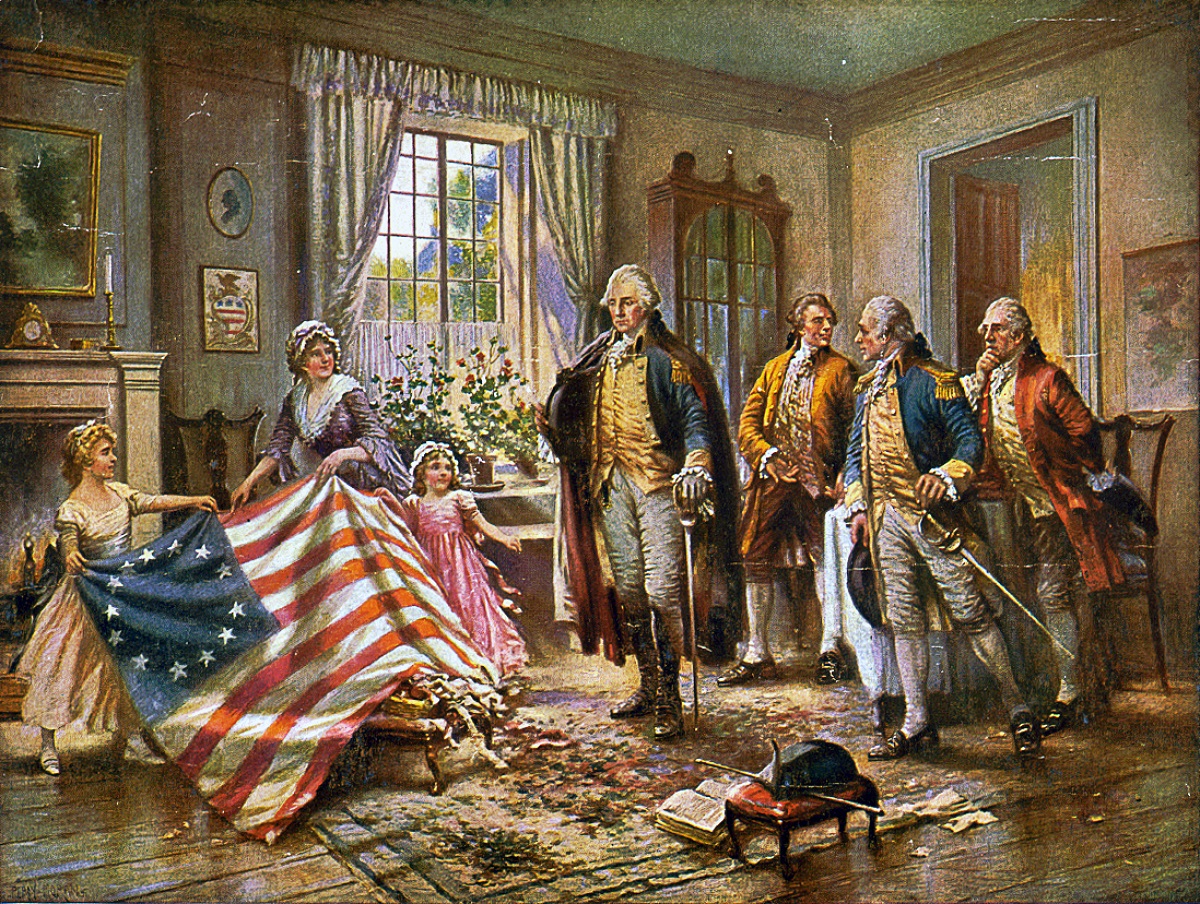Today’s fraudulent multiculturalist faith fragments society—and fractures the psyche.
Making Americans Your Enemies

How the government shifted its “Counter-Extremism” strategy to target the mainstream.
The narrative is here, and it doesn’t like you very much.
In recent remarks before members of the U.S. House Homeland Security Committee, the chief of the D.C. Homeland Security and Emergency Management Agency claimed that domestic extremism has become “part of the cultural mainstream.”
Former DHS official and USA Today contributor Elizabeth Neumann agrees: “Far-Right Extremists went mainstream under Trump.”
“Extremists have gone mainstream,” echoes journalist Zahra Ahmad. “Lawyers, realtors and every-day folks make up their ranks.” Ahmad cites a figure suggesting a quarter of Americans hold “ideas incubated by white nationalists.”
Not to be left out, NPR warns that white extremism “seeps” into the mainstream. The Atlantic says the mainstream has gone extremist too. A study by the Chicago Project on Security and Threats warns that most January 6 “insurrectionists” were mainstream to the extreme:
They work as CEOs, shop owners, doctors, lawyers, IT specialists, and accountants. Strikingly, court documents indicate that only 9 percent are unemployed. Of the earlier far-right extremist suspects we studied, 61 percent were under 35, 25 percent were unemployed, and almost none worked in white-collar occupations.
The Chicago Project is led by Robert Pape, a University of Chicago academic best known for declaring that Islamic extremism plays no role in suicide bombings and who once urged a U.S. government-identified front group for the terror organization Hamas to purchase copies to promote his book. So it’s an open question whether Pape and company can actually identify extremism when they see it.
But what does it say about America’s elites—security officials, academics, and media personalities—that they are all convinced that those holding the prevailing attitudes and values of our society are a dangerous threat? And a threat to whom?
To paraphrase famed fictional lawman Raylan Givens, “If you ran into an extremist in the morning, you ran into an extremist. But if you run into extremists all day…”
Perhaps it’s you who’s the extremist.
How did we get here? And what do we do about it?
Cleaving Extremists from the Mainstream
Early in the Global War on Terror, the U.S. government decided to regard its Islamic terrorist foes as unconnected to any larger political or theological movement. Al Qaeda (and all its predecessors and successors) came to be regarded as a handful of extremists unconnected to any larger ideological base. As former U.S. Army intelligence analyst Stephen Coughlin noted in his book Catastrophic Failure: Blindfolding America in the Face of Jihad, early in the war the government became allergic to the notion that Islamic terrorists were anything other than extremists on the very outskirts of an ideological movement. “The prevailing theory is that Islamic ‘extremists’ are at the periphery of Islam,” Coughlin wrote. “Hence, all that is needed is to cleave the radicals from the mainstream.”
In reality, jihadist terrorists are the militant vanguard of a larger ideological movement, known as Islamism or political Islam, which is fundamentally hostile to the United States and its foundational principles and favored by a group far larger than the U.S. government was comfortable admitting, including domestic pressure groups. “Extremist” became the preferred term because the word contains within itself an explanation of the relationship between the extremist and the rest of society. An extremist, by definition, is not part of the mainstream.
Forbidden from discussing the actual nature and ideology of the threat which they were instructed to counter, America’s intelligence and law enforcement officials lived and died by euphemism. And like the bureaucracies which perpetuate them, government euphemisms tend to expand even beyond the original logic for their creation. So, when “Islamic extremist” was no longer sufficiently vague, the phrase “homegrown violent extremist” was adopted, where “homegrown” paradoxically refers to those operating in service to a foreign ideology perpetuated by international terrorists.
The very logic of denying that foreign terrorists could be motivated by an ideology developed from within the context of their own society necessitated believing that any mainstream American within our society could be a potential threat. As Angelo Codevilla writes in To Make and Keep Peace: Among Ourselves and with All Nations:
It demanded that the American people put aside the distinction between fellow citizens and those who despise us, between our culture and theirs; that, as a gesture of peace toward the Muslim world, Americans make no distinction between themselves and the people, culture, and causes responsible for 9/11 and nearly all other acts of terror. That meant demanding that Americans believe that any among ourselves are as likely as not to be terrorists. In sum, it demanded that Americans trust each other less than ever, but that they trust the authorities more than ever [emphasis in original].
This concept of course is amply demonstrated every time you see a wheelchair-bound nonagenarian from Des Moines manhandled through the technological gauntlet of the TSA at your local airport.
Some Extremists are More Equal than Others
Redirecting the massive security apparatus built after 9/11 from foreign to domestic threats did not mean redressing all perceived domestic threats equally. Instead, it meant that there was political power to be gained based on who could most clearly identify the fringe of their political opposition as the most dangerous extreme. For the past several years, the media, backed up by left wing think tanks, pushed claims that “right-wing” or “white supremacist” terrorism was the largest and most dangerous of threats, while minimizing or even denying the existence of any other. In doing so they often mischaracterized, minimized, or refused to count violence coming from favored classes.
A perfect illustration of this has been the successful effort by the left to eliminate the category of “black identity extremism,” which the FBI had previously used to categorize violence coming from black separatist or black nationalist groups. This became especially relevant following the 2014 Ferguson riots, when the targeting of law enforcement by those with ties to black separatist groups became more common.
Members of the Congressional Black Caucus—whose members have expressed their own support for extremists ranging from the Nation of Islam’s Louis Farrakhan to Fidel Castro—took umbrage, and called the FBI to account in hearings.
The FBI abandoned the term in favor of the appropriately euphemistic Racially and Ethnically Motivated Violent Extremists. This new catch-all included both black identity extremists as well as white supremacists. This created the advantageous situation where the left could blame even black supremacist violence on white supremacists, which they gladly did. In a 2019 domestic terrorism bill, for example, they included an attack on a New York Jewish religious school among a list of white supremacist incidents. In fact, the attack was carried out by adherents of the Black Hebrews, an antisemitic black identity group.
This worked so well that the FBI would go on to do the same with the term “anti-government extremists,” slapping the same label on so-called “right-wing” militias, “boogaloo bois,” COVID lockdown opponents, as well as Anarcho-Communists like Antifa.
Through bureaucratic sleight of hand, the government managed to promote the farcical claim, perpetuated by the left in the early days of George Floyd riots, that violence in progressive cities across the country was the work of white supremacists hoping to start a race war. Meanwhile, during the riots in Washington D.C., military officers, federal law enforcement and even elected members of congress literally knelt to the black identity extremism of BLM.
Having successfully banned the nation’s law enforcement and intelligence agencies from using any useful descriptive term for threats other than “white supremacist,” the left crowed that government reports show that white supremacy is the biggest national threat. And because actual white supremacists are an unpopular and poorly organized subgroup with no powerful constituency (like a Congressional Black Caucus) behind them, they remain the one group that can be targeted without facing any significant political opposition.
Everything is White Supremacy
The twisted logic of this strategy has, predictably, spread like wildfire. At the same time the government’s intelligence and law enforcement apparatus became conditioned not to categorize any threat other than white supremacy, the American academy and media expanded the term “white supremacy” to cover essentially everything once understood as simply “American.”
As the New York Times wrote, “‘White Supremacy’ once meant David Duke and the Klan. Now it refers to much more. The phrase has poured into the nation’s rhetorical bloodstream. Organizations from the N.F.L. to art museums to colleges requiring the SAT are accused of perpetuating it.”
White Supremacy, we are told, has “framed the entire American story” and “has its roots in American Christianity.” In Oregon, requiring students to show their work in math class is “white supremacy.” In fact, 2+2=4 reeks of “white supremacy,” but don’t worry about that, because re-opening closed schools is “white supremacy” too—which makes it all the easier to label those COVID lockdown protestors as a threat. It’s a neat trick: domestic extremists on the left have forced into the mainstream the toxic, destructive idea that domestic extremists on the right made white supremacy mainstream. And as my fellow 2017 Claremont Lincoln Fellow Christopher Rufo has worked to document, we did not arrive by accident in this world. We arrived here by revolutionary design.
Critical Race Theory has been mainlined into schools, corporate HR departments, and local and national government agencies. The U.S. Army’s “Equity and Inclusion” agency declared the political slogan of its own commander and chief—”Make America Great Again”—to be a symbol of white supremacy. In this way Critical Race Theory has served as kind of auto-immune disorder within the body politic. By identifying the American regime itself as “white supremacy,” and identifying that as the only possible threat to the regime, the security apparatus of the state has now been turned inward upon the state itself, and with it, our society—or in other words, upon us.
We have seen the schizophrenic response to the events of January 6: immediately after calling out the National Guard, elites became obsessed with the notion that the National Guard was full of white supremacist infiltrators. Similarly, the Democrats’ proposed domestic terrorism legislation, which one might expect to be focused on beefing up law enforcement assets to take on the perceived threat, is almost entirely focused on rooting out “extremists” from within the law enforcement and military. America’s security apparatus has adopted wholesale the very logic of the foreign ideologies it was created to combat.
Leaving the Mainstream
Following the disorder of January 6, elites touted their experiences in Iraq and Afghanistan, telling us the time had come to wage the same strategy of counterinsurgency against “insurrectionists” at home that we used to “defeat Al Qaeda” abroad. Never mind that we have yet to rid Afghanistan of extremists, despite having occupied it now for two decades at the cost of more than $2 trillion.
Suddenly it became a necessity for counterterrorism officials to note that terrorists exist within a broader ideological community. Robert Grenier, formerly CIA station chief for Pakistan and Afghanistan and director of the CIA’s counterterrorism center did in the New York Times, offered a more astute analysis than one has come to expect from our elites:
There has long existed in this country a large, religiously conservative segment of the population, disproportionately (though not entirely) rural and culturally marginalized, that believes with some reason it is being eclipsed by a politically and culturally ascendant urban coalition of immigrants, minorities and the college-educated secular elites of tech and mainstream media. That coalition, in their eyes, abridges their religious freedoms, disparages and ‘cancels’ their most cherished beliefs, seeks to impose “socialism” and is ultimately prepared to seize their guns. This, in very general terms, is the core segment of the nation that has been unified, championed, and politically energized by Donald Trump.
At least Grenier recognizes that the 45th president had a large and viable political constituency with actual political concerns. But, of course, that political constituency is understood as no more than the backwoods equivalent of the Taliban, as Grenier told NPR:
the thrust of our campaign there was, yes, to hunt down al-Qaida, but primarily to remove the supportive environment in which they were able to live and to flourish. And that meant fighting the Taliban. And I think that is the heart of what we need to deal with here.
When it comes to their own countrymen, counterinsurgency gurus are prepared to acknowledge that the beliefs of a “tiny minority of extremists” are shared by large swathes of the population, who must now be defeated and (as they said of the Iraqis loyal to Saddam Hussein’s party) “de-Baathified.”
Typical of the CIA over the past 20 years, Grenier’s solution was to decapitate the enemy’s leadership, although thankfully just with impeachment, not (this time) drone strikes. And our present elites don’t even intend to offer Trump the courtesy they are said to have extended to Osama bin Laden of a ritual burial.
Counterinsurgency experts believe it is insufficient merely to unperson and humiliate a man half the country voted for. His voters, these insurgents, must also be humiliated. So noted Malcom Nance, an MSNBC counterterrorism analyst and Russian collusion truther, widely despised within the military community and known for urging ISIS to bomb a Trump Hotel.
Nance warned that pro-Trump insurgents were especially dangerous, given that they were heavily armed… with “white privilege”:
Achieving Trump’s disruptive goals on a national scale might be simpler than we want to admit. An NBC poll reveals Trump commands the loyalty of 87 percent of Republicans—even after the Jan. 6 assault. And his followers have successfully employed a cultural tool so powerful many deny it even exists: White privilege.
Privilege, extremism, supremacism—it’s all spun as the same, and all spun as an evil on par with Islamic terrorism that must be stamped out, in the same ways by the same people. When it comes to their fellow Americans, for many of our supposed counterterrorism elite, the imperative to separate the actions of a handful of ‘extremists” from the beliefs of large percentages of the populace has totally disappeared. While claiming to use lessons learned from Iraq and Afghanistan, in fact what these counterinsurgents propose for their fellow citizens is the one thing they dared not countenance against foreigners.
The Elites are the Extremists
This is not sustainable. The mainstream of a society cannot be extremist. It might be foolish, or misled, or prone to irrational things, as crowds often are. The mainstream of a society might even be immoral or wicked in an objective sense when measured against other societies. But what it cannot be is extreme. An elite, however, can be extremist. An elite’s views may be so outside the mainstream of the society, beholden to foreign ideologies, that their views are unrecognizable to those they purport to lead.
Perhaps it is finally time that America’s elite, who have been increasingly acting as occupiers, to pay mainstream Americans the same respect they previously deigned to provide only to foreigners committed to their ways of life.
Respect the mainstream’s traditions, and don’t mock their customs. Drink a cup of tea, or three, with their elders. Sit quietly, and nod politely, during their religious ceremonies. Let them run their own affairs.
And don’t treat them as the root cause of all the world’s evil.
Photo Credit: Bruce Detorres
The American Mind presents a range of perspectives. Views are writers’ own and do not necessarily represent those of The Claremont Institute.
The American Mind is a publication of the Claremont Institute, a non-profit 501(c)(3) organization, dedicated to restoring the principles of the American Founding to their rightful, preeminent authority in our national life. Interested in supporting our work? Gifts to the Claremont Institute are tax-deductible.
Revisionist Black supremacist history can't grasp our shared equality.
The 1776 Report demonstrates a more sophisticated grasp of history than that of its critics.



